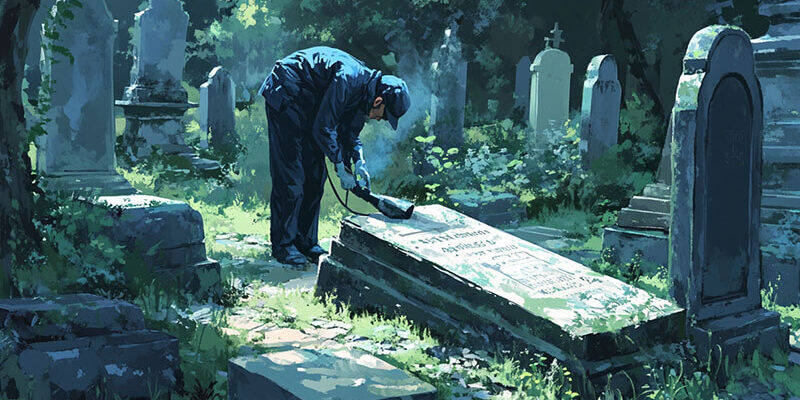Granite is a strong, durable stone. It is often used for headstones. However, it is not indestructible. Cleaning granite requires care. Bleach is a common cleaner, but it can harm granite if used improperly. To preserve a granite headstone, it is crucial to know the risks of using bleach.
Bleach and Granite
Bleach is a strong chemical. It can clean tough stains and kill mold. However, it is not ideal for all surfaces. Granite is a natural stone. It contains minerals that react to harsh chemicals. Bleach can damage the polished finish of granite. Over time, it can cause discoloration and weaken the stone.
How Bleach Harms Granite
Granite has pores. These small openings allow water and air to enter. Bleach can seep into these pores. Once inside, it may cause the stone to weaken. Bleach can also interact with the minerals in granite. This reaction can leave stains or dull the surface.
If bleach is left on too long, it can leave white streaks or spots. These marks are hard to remove. They can make the headstone look worn and unattractive. Harsh cleaning can also strip the sealant from granite. Without a sealant, the stone is more exposed to weathering.
Mold and Stain Removal
Bleach is often used to clean mold or algae. While effective, there are safer options. A gentle soap and water solution works well. It removes dirt and light stains without harming the granite. A mixture of water and rubbing alcohol can also kill mold. This solution is safer and less harsh than bleach.
For deep stains, consider professional cleaning. Experts use tools and products made for stone care. These methods are less likely to harm the headstone.
Cleaning a Granite Headstone
Before cleaning, inspect the headstone. Check for cracks, chips, or worn spots. Do not use bleach if damage is present. Damaged areas can absorb more chemicals. This increases the risk of further harm.
Always use mild cleaning products. A soft brush or sponge is best. Scrubbing with hard bristles can scratch the surface. Rinse the headstone with clean water. This removes residue and prevents buildup. Dry the surface with a soft cloth to avoid water stains.
Do not use household cleaners unless made for stone. Many contain acids or harsh chemicals. These can harm granite in the same way as bleach.

Protecting Granite
Sealing is important for protecting granite. A good sealant keeps out water and dirt. It also reduces the risk of stains. Reapply sealant as needed, typically every few years. Avoid abrasive tools or products. These can remove the sealant and harm the stone.
Granite should also be shaded if possible. Direct sunlight can heat the stone. Heat may cause the sealant to wear off faster. Regular maintenance keeps the headstone in good shape.
Alternatives to Bleach
Many stone-safe cleaners are available. These are designed for granite and other natural stones. Look for pH-balanced or neutral cleaners. These clean without stripping the sealant or dulling the stone. Avoid products with ammonia, acids, or harsh chemicals.
Homemade solutions can also work. Mix dish soap with water for a gentle cleaner. A mix of water and hydrogen peroxide can clean mold or stains. Use a soft cloth or sponge for application. Rinse thoroughly with clean water.
Conclusion
Bleach is not the best choice for granite headstones. It can harm the stone and dull its beauty. Safer cleaning methods exist. Use gentle cleaners and soft tools. Inspect and maintain the headstone regularly. Protect the granite with a good sealant. These steps keep the headstone clean and lasting for years to come.







